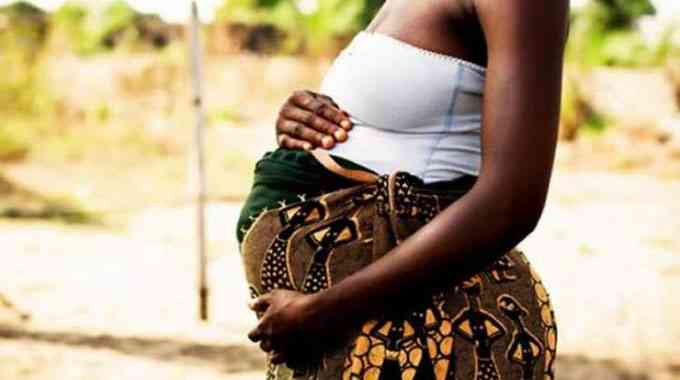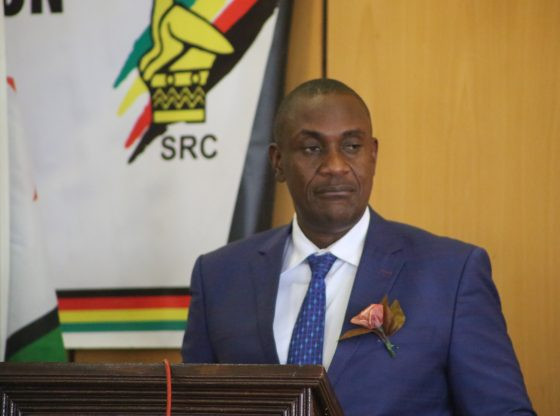
A LEAKED conversation between two female pupils describing steamy sex sessions with their teacher in Chitungwiza has opened a Pandora’s box on the risng levels of child sexual abuse in Zimbabwe’s schools.
The leaked chat, which went viral on social media platforms, has sent shockwaves throughout communities, raising concerns about the safety and welfare of pupils in schools.
It revealed a blatant abuse of power, trust and authority, by those entrusted with the young children as well as a complete disregard for professional boundaries and conduct.
Oblivious to the consequences of engaging in early sex, the explicit nature of the conversation highlighted the vulnerability of pupils and the urgent need for comprehensive measures to safeguard young girls within the educatio system.
Investigations by NewsDay have revealed that some children as young as Grade 7 pupils are involved in sexual activities while others in Grade 5 have admitted to having kissed a member of the opposite sex.
In interviews conducted with children who had admitted taking part in sexual activities, their voices paint a bleak picture of the realities they face.
"I didn't know what I was getting into. It started with curiosity, but then it became a regular thing. We were influenced by older students and peers,” said a learner (name withheld) who is now a child bride at the age of 15.
Videos of school pupils engaging in group sex orgies have gone viral in the past months.
- Take DNA test: Mphoko’s wife challenges Siqokoqela
- Collapsed Zimbabwe health sector makes fresh international headlines
- The dark side of social media platforms
- Feature: Poverty fuels Zim’s child sexual abuse
Keep Reading
According to the United Nations Children's Fund (Unicef), Zimbabwe has 1 million cases of child brides, with one in three young women having been married in their childhood.
A staggering 22% of adolescent girls aged 15 to 19 are now childbearers; one third of the maternal deaths are among adolescents aged 10 to 19.
Unicef has also expressed concern over an increase in the number of adolescents who are living with HIV.
There are over 85 000 adolescents living with HIV; 4,1% of girls aged 13 to 17 experience sexual violence. 47% of adolescents are out of school in Zimbabwe.
Child rights lawyer and one of the founders of Justice for Children Trust, Caleb Mutandwa, said economic hardships and peer pressure in Zimbabwe were forcing children to indulge in early sexual activities.
“There are so many factors that contribute to this underage sex between a child and adult. It could start with the exposure children now have with regards to sex. Sometimes children watch inappropriate content and they try to experiment. Sometimes children would want to identify with their colleagues and they end up indulging.
“However, the economic situation in Zimbabwe has forced some children to indulge in the activity for money due to poverty. We can’t take away the issue of poverty as one of the factors, mostly cases of early child marriages are due to poor backgrounds,” Mutandwa said.
Social commentator Pardon Taodzera added that there were several underlying issues forcing children into engaging in early sex, toxic relationships and drugs.
“Some of the factors are peer pressure, lack of parental supervision and inadequate sex education as key contributors. There is a need for comprehensive sex education programmes that address consent, healthy relationships and the dangers of substance abuse,” he said.
Taodzera added that there was an urgent need for different stakeholders to come together to curb the vice before it gets out of hand.
Shamwari yeMwanasikana director Ekenia Chifamba said more needs to be done to protect the rights of the girl child.
“We have seen the challenges on child marriages that continue to be on the increase and our women and girls continue to be on the receiving end,” she said. Government introduced new pieces of legislation that have a bearing on child rights protections. Such laws include the Child Justice Bill and the Marriage Act, which has increased the age of consent to 18 years.
Over the past decade, Zimbabwe has had two landmark judgments which were meant to change the situation for girls tremendously.
In 2016, child marriages were banned by the Constitutional Court and in 2022, the age of consent was raised to 18 years.
Although efforts have been made in amending the Marriages Act to raise the age of marriage to 18, the efforts to curtail child marriages have been disheartening. Statistics showed that since 2016, very little has changed in the number of girls married before the age of 18 in Zimbabwe.
Primary and Secondary Education ministry spokesperson Taungana Ndoro said: “Teachers who have affairs with pupils are charged with improper association under the Public Service Commission regulations.”
Vice-President Constantino Chiwenga recently said violators of children’s rights and parents would soon face criminal charges as the government introduces stiffer penalties to curb sexual offences.
National police spokesperson Assistant Commissioner Paul Nyathi said they were arresting all perpetrators of child marriages in efforts to curb the vice.
“We have always been clear that anyone who falls in love with a child under the age of 16 years can be arrested and the law has been very specific on that,” Nyathi said.
Scripture Union Zimbabwe-Thuthuka Children’s Project, Child support officer Best Ndlovu said lack of parental guidance or absentee parents or guardians was fuelling a spike in child sex abuses.
“The children easily adapt to learning from their parents who they also see them as role models whom they look up to them that even when under pressure from their peers they can easily flee from temptations and bad choices.
“The children need to be safeguarded by their parents and the community at large but the same people who do that are the perpetrators of abuse or are busy hustling for their families hence less family time to caution their children and guiding them on the right path,” she said.
Founding President of Lleat Foundation, Lloyd Mlotshwa, said girls gain an uncontrolled level of confidence under the influence of drugs forcing them to boldly initiate sexual conversations with adults who are well beyond their age.
“Teachers who abuse drugs (especially alcohol) also find themselves responding inappropriately to sexual suggestions from under-age schoolgirls especially if those girls physically appear older or mature.
“When some girls learn that their peers have indulged in sexual activities, they feel left out and start to actively look for an adult who is weak enough to fall for their sexual requests. This results in two people regretting: the girl after realising that she has lost what she cannot restore and an adult teacher who has put his job (or business) at risk. They most likely suffer shame after falling for the temptation,” he said.
He said the social media has helped to trigger a sense of curiosity to underage schoolgirls who then desire to have a taste of what social media is advertising.
A National Assessment on Adolescent Pregnancies in Zimbabwe 2023 report stated that adolescent pregnancy prevalence was 23,7% (337/1418) for adolescents aged between 10 to 19 years.
“Among the 337 pregnant adolescents, 4.0% (20) had disabilities. The analysis of adolescent pregnancy prevalence showed that 0.9% of 10 to 14-year-olds (4/567) and 41.2% of 15 to 19-year-olds (333/851) were pregnant.
“The prevalence of pregnancy differed significantly between the two age groups, with older adolescents (15 to 19-year old) being 71.2 times more likely to be pregnant than very young adolescents (10 to 14-year-olds),” read the report.
The report also said the study found that 30% of the adolescent girls were sexually active.










